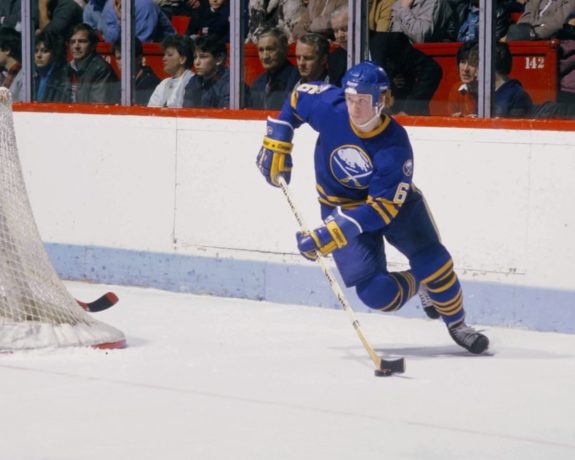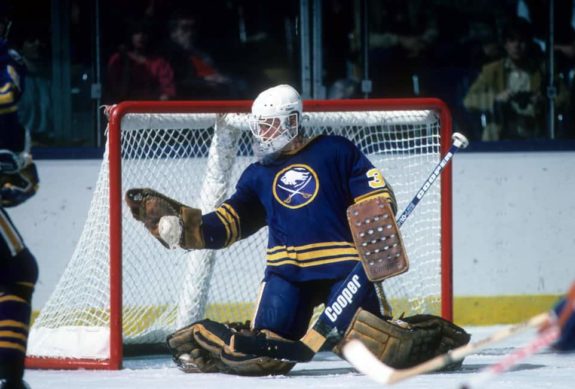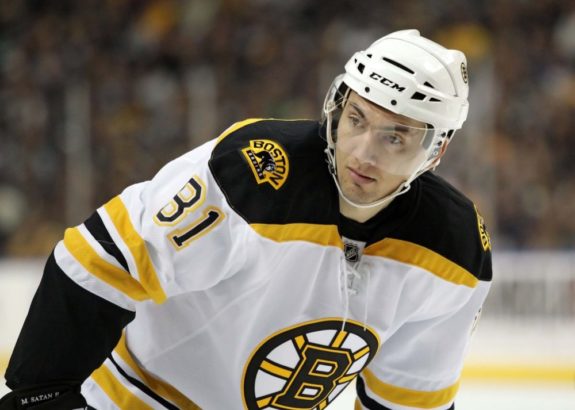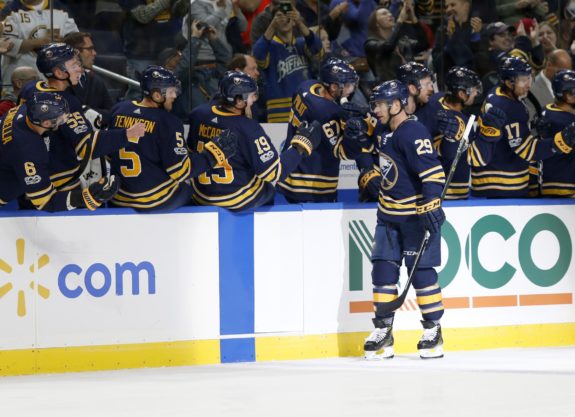Every franchise has a handful of players who, in retrospect, were much better than they are given credit for. Maybe they were run out of town during a regime change or phased-out in favor of a younger core. Perhaps they simply wanted to leave for greener pastures.
Regardless of the circumstances of their departure, the Buffalo Sabres have more than a handful of players who fit the bill. With a roster full of young talent taking shape in Western New York, here’s a look back at six players who have not received the credit they deserve for their superb play as members of the Sabres organization.
Phil Housley
For the most part, Sabres fans have fond memories of Housley’s time in Buffalo. That being said, he does not get nearly enough recognition as the undisputed best offensive defenseman in team history. Given his incredible skill set, fans should have been livid to see him traded.
In 1982, he burst onto the scene, posting 66 points in 77 games as a rookie. When Scotty Bowman took over as the team’s head coach the following season, he was so impressed by Housley’s offensive ability that he had him spend time at center as well as on defense. This experiment also took place as a result of suspect play in his own end.

League-wide, Housley is still considered one of the best puck-moving blueliners to ever play the game, that much was evidenced by his induction into the Hockey Hall of Fame in 2015. Still, there were fans in Buffalo who were happy to see him shipped out as part of a deal with the Winnipeg Jets to acquire Dale Hawerchuk in 1990.
He would go on to produce the highest point totals of his career during his time with the Jets. His 97-point campaign in 1992-93 is still the 16th highest single-season mark for a defenseman in league history. Even though his best work came after his eight-year stint with the Sabres, Housley still ranks fifth in franchise history with 558 points. It’s almost criminal that the franchise hasn’t retired his number.
Tom Barrasso
For a franchise that has had perhaps the best collection of goalies in NHL history, it’s easy to forget how fantastic Barrasso was and at such a young age. After posting a .893 save percentage (a very respectable mark for the era) as an 18-year-old rookie in 1983-84, he was awarded the Calder Trophy as the league’s most outstanding first-year player, and the Vezina Trophy as the league’s top goaltender. Only one other goaltender has won the Vezina as a rookie (Ron Hextall, 1986-87).
In 1984-85, he followed up his sensational inaugural campaign with a league-low goals-against average of 2.67, good enough to earn him his first and only Jennings Trophy.

Barrasso is best known for the time he spent with the Pittsburgh Penguins after he was traded in 1988. With the 23-year-old off to a rough start and backup netminder Darren Puppa playing well, general manager, Gerry Meehan, decided to cut ties with a goalie who had finished as the runner-up for the Vezina the previous season.
He would go on to help the Penguins win back-to-back Stanley Cups in 1991 and 1992. Though the Sabres didn’t win the trade, they did acquire defenseman Doug Bodger in the deal, and Puppa carved out a nice little career for himself in Buffalo as well.
Miroslav Satan
In what would become an extremely lopsided deal in the Sabres’ favor, Satan was acquired via trade from the Edmonton Oilers in exchange for Barrie Moore and Craig Millar. Soon after he arrived, he became one of the team’s biggest offensive threats. The last time the Sabres competed for the Stanley Cup in 1999, he was the team’s only consistent scoring presence. He led the Sabres in points in five of his seven seasons with the franchise.
After a down-year in 2003-04, the Sabres opted to let Satan hit the free agent market following the NHL lockout. He would go on to spend the last five years of his career splitting time between the New York Islanders, Pittsburgh Penguins and Boston Bruins.

When he left town, fans dwelled on his lackluster play toward the end of his tenure with the club. For a player that carried the Sabres offense from 1998 to 2003, he doesn’t get nearly enough respect from fans. It was karmic to watch him turn on the jets one last time to help the Bruins defeat the Sabres in the first round of the 2010 playoffs.
The Slovakian sniper still ranks 12th all-time in franchise scoring.
Pierre Turgeon
With the first overall pick in the 1987 NHL draft, the Sabres selected Turgeon to help catalyze their anaemic offense. In just his third season with the team, he posted 106 points, which still stands as the fourth-highest single-season total in franchise history.
In 1990-91, he experienced a regression (of sorts) registering 79 points in 78 games. This led the team to make a mutually beneficial deal with the Islanders for Pat LaFontaine (with whom the Isles had struggled to negotiate a contract extension). The Sabres needed a spark after being eliminated in the first round of the playoffs for four consecutive seasons, and New York needed a young star to lead the offense after purging their “old core”.
Sabres fans’ lack of recognition for Turgeon is understandable considering that he only spent four seasons with the blue-and-gold, however his phenomenal offensive prowess should not go unrecognized. He is still one of only eight players in Sabres history to have averaged over a point-per-game.
Jason Pominville
At first, Pominville’s inclusion here might raise a few eyebrows, but after diving into his offensive production throughout the course of his Sabres career, it becomes obvious just how under-appreciated he truly is. If the 35-year-old is able to hammer out a couple more seasons in Buffalo before calling it a career, he could reasonably end up in the Sabres’ top-five in career points (he is just 68 points shy of Housley’s fifth-place spot).

During his rookie campaign in 2005-06, he helped produce points as a third liner on a Sabres squad that reached the Eastern Conference Final. When Chris Drury and Daniel Briere infamously left town as free agents in the summer of 2007, Pominville helped pick up some of the scoring slack in their absence, notching 80 points the following season. In fact, only once during his first stint in Buffalo (a tenure that lasted eight seasons), did he dip below 50 points (not including the lockout-shortened season in 2012-13).
Last summer the former-captain returned to Western New York as part of a trade with the Minnesota Wild. Though he was never a flashy offensive playmaker, he was a consistent scoring presence in Buffalo for the better part of a decade.
Thomas Vanek
Rounding out the list is Vanek, who may be the most underrated of the group. The unfortunate knock on him from a fan perspective is the ridiculous offer sheet the Oilers signed him to as a restricted free agent in 2007. The Sabres were just days removed from losing their co-captains, Briere and Drury, and Edmonton threw gas on the fire (see what I did there?) by offering the then 23-year-old a seven-year, $50 million contract.
After completely botching the offseason to that point, former GM Darcy Regier couldn’t let Vanek slip away, so he was forced to match the offer. From then on, the expectations were set exceptionally high for the Austrian wonder, a bar that he would never reach.

Contract situation aside, Vanek’s production was never truly appreciated despite having a relatively weak supporting cast around him. Though he never did match the 84 points he posted in 2006-07, he managed to be the team’s leading goal-scorer in six of his eight seasons as a Sabre, surpassing the 40-mark twice.
A lot of the criticism about Vanek during his time in Buffalo was based on his perceived “laziness,” but it was and continues to be an unfair assessment. While he did, at times, disappear during the playoffs, his competitive fire is something the franchise has sorely missed since he was traded to the Islanders in 2013.